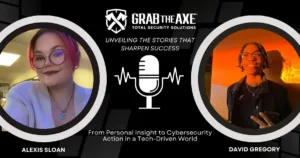The National Institute of Standards and Technology (NIST) Cybersecurity Framework (CSF) is a cornerstone in the cybersecurity industry, offering organizations a structured and flexible approach to managing cybersecurity risks. After a decade of its inaugural release, the NIST CSF 2.0 Update has been introduced, marking a pivotal evolution in the framework to better align with modern cybersecurity challenges. This article delves into the five critical changes in the NIST CSF 2.0 Update that every cybersecurity professional must know.
Embracing the “Govern” Function: A Strategic Imperative
The introduction of the “Govern” function in the NIST CSF 2.0 Update signifies a strategic shift in how businesses should approach cybersecurity. This function emphasizes the need for cybersecurity to be integrated into the broader enterprise risk management conversation, ensuring it receives the same level of attention as legal, financial, and operational risks. Business owners should consider establishing a dedicated cybersecurity governance committee that includes cross-functional leadership. This committee can oversee the development of cybersecurity policies, ensure compliance with regulatory requirements, and prioritize cybersecurity investments based on risk assessments.
NIST CSF 2.0 Update: Streamlining Cybersecurity Efforts
The CSF 2.0’s more concise and focused approach offers an opportunity for businesses to streamline their cybersecurity efforts. By relocating some content and refining the core framework, NIST has made it easier for organizations to identify and implement the most relevant cybersecurity practices. Business owners should conduct a thorough review of their current cybersecurity practices against the updated framework to identify areas of overlap and potential gaps. This can lead to more efficient resource allocation and enhanced protection against cyber threats.
NIST CSF 2.0 Update: Expanding Coverage to Protect Your Business
With its expanded scope, the CSF 2.0 Update is designed to be applicable across all industries and business sizes, including small and medium-sized enterprises (SMEs) that may not have previously considered themselves targets for cyber attacks. Business owners should leverage this broader applicability to reassess their cybersecurity posture in light of emerging technologies and platforms they may be using, such as cloud services, mobile applications, and IoT devices. Developing a cybersecurity strategy that encompasses these technologies can help protect against a wider range of threats.
Utilizing Implementation Examples for Practical Guidance
The “Implementation Examples” introduced in the CSF 2.0 Update are invaluable for business owners seeking practical guidance on applying the framework to their operations. These examples illustrate how specific outcomes can be achieved, offering a roadmap for selecting and implementing effective cybersecurity controls. Business owners should review these examples to understand how to apply the framework’s principles to their unique contexts, which can be particularly beneficial for organizations without extensive cybersecurity expertise.
Customizing the Framework to Fit Your Business Needs
The flexibility and customization at the heart of the CSF remain integral in the 2.0 Update. This allows business owners to tailor the framework to align with their specific business objectives, regulatory requirements, and risk appetite. To effectively customize the framework, businesses should start by conducting a comprehensive risk assessment to identify their most critical assets and vulnerabilities. From there, they can develop a current and target profile, enabling them to map out a strategic plan to address identified gaps and enhance their cybersecurity posture over time.
Secure your digital future today! With the NIST CSF 2.0 Update bringing vital changes to the cybersecurity landscape, it’s more crucial than ever to ensure your business is not only compliant but ahead of the curve. Grab The Axe is here to guide you through every step of implementing these critical updates into your cybersecurity strategy. Our expertise in aligning business operations with the latest cybersecurity standards means you can focus on what you do best, knowing your digital assets are protected.
Don’t let cybersecurity complexities slow your business down. Contact Grab The Axe now to schedule a consultation. Our team of experts will work with you to customize the NIST CSF 2.0 to your unique business needs, ensuring you’re not just protected but prepared for whatever the digital world throws your way. Visit Grab The Axe’s Contact Page or call us directly to take the first step towards a secure and resilient digital future. Your security is our priority. Act now to safeguard your business’s tomorrow.
For more information about the NIST CSF 2.0 Update, check out Insights!
References
National Institute of Standards and Technology. (2023). Cybersecurity Framework 2.0 Expands Scope and Adds Focus on Governance. Retrieved from https://www.nist.gov/news-events/news/2023/09/cybersecurity-framework-20-expands-scope-and-adds-focus-governance
SecureWorld. (2023). NIST Framework Version 2.0 a Smart Evolution from 1.1. Retrieved from https://www.secureworld.io/industry-news/nist-framework-version-2-evolution
Sedara Security. (2023). What’s New in the NIST CSF 2.0 Draft. Retrieved from https://www.sedarasecurity.com/nist-csf-20-draft-whats-new
NIST CSF 2.0 Update – To Learn More:
What is included in a cybersecurity assessment? A Detailed Guide 2024
Data Privacy Laws Compliance: Navigating Data Privacy Laws – Ensuring GDPR and HIPAA Compliance





Pingback: Essential Cybersecurity Communication Guide for Specialists: Effective Strategies - Grab The Axe
Pingback: IoT Security Solutions: Navigating Challenges for a Safer Tomorrow - Grab The Axe
Pingback: Top Cybersecurity Trends of 2024: Prepare Your Business for the Future - Grab The Axe